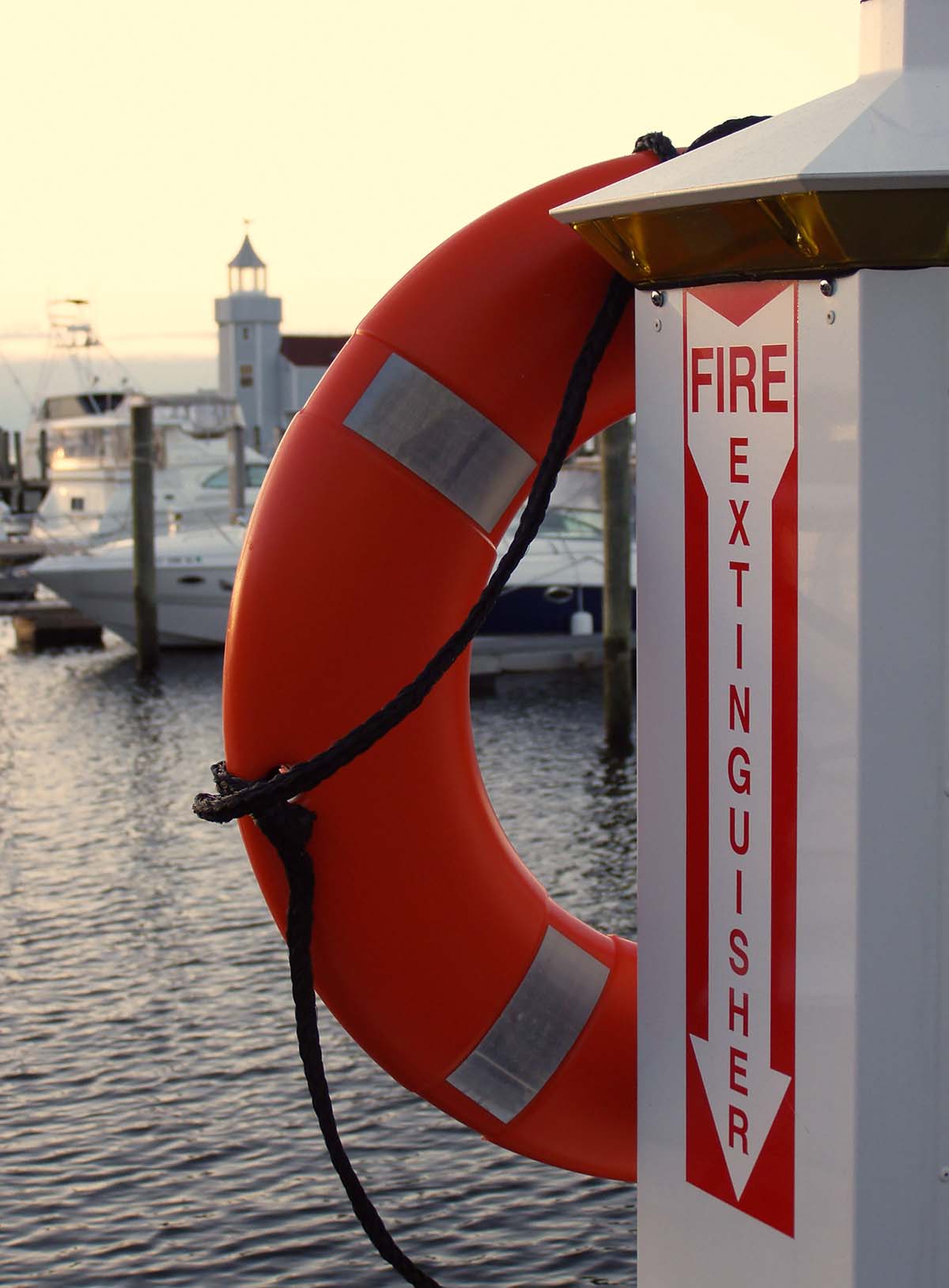
Boating Season on the Horizon: What Do Marina Owners and Operators Need to Know About Workplace Safety?
Published on May 2, 2024More than ever before, marina owners and operators need to ensure their workplace safety practices are up to date. It’s no secret that the Occupational Safety and Health Administration (OSHA) frequently inspects marinas and boatyards for safety violations, and now OSHA is especially cracking down on heat-safety violations. Marinas need to focus on five safety areas to stay ahead of the curve as they prepare for boating season.
Heat Safety
Heat safety is a critical consideration because employees may be exposed to high temperatures for extended periods of time. Here are a few ways marinas can look out for employees.
Provide ample access to potable water throughout the marina, and encourage employees to drink water frequently.
Design shaded areas where employees and customers can avoid the sun. Opportunities include shaded seating areas, large umbrellas and awnings. Install fans or misting stations to circulate air and reduce heat buildup.
Employees should be encouraged to wear lightweight and breathable clothing that covers exposed skin, and they should be provided sunscreen throughout the day.
Analyze whether physically demanding tasks can be completed during cooler times of the day to minimize exposure to peak temperatures.
Training and awareness for signs and symptoms of heat-related illnesses, such as heat exhaustion and heat stroke, should be conducted during onboarding.
Managers should also be flexible and supportive of employees who may need additional accommodations due to heat-related issues. For example, managers could allow those employees more frequent breaks or provide temporary relief from strenuous tasks.
Eyewash Stations
An eyewash and/or safety shower is required when an employee’s eyes or body could be exposed to injurious corrosive materials. Assess the need to provide an eyewash or safety shower and whether it meets recommended guidance. The OSHA standard does not provide a clear definition of the size, type or location of eye wash stations, but guidance from the American National Standards Institute provides five key metrics.
Maximum travel distance to an eye wash station is 10 seconds or approximately 50 feet.
Water must have a flow rate of at least 0.4 gallons per minute (GPM) and a minimum pressure of 30 pounds per square inch (psi) for a full 15 minutes.
Hands-free stay-open valves should activate in one second or less.
The heads of the units (water flow pattern) must be positioned 33 inches to 53 inches from the surface on which the user stands and 6 inches minimum from the wall.
Eyewash fluid must irrigate and flush both eyes simultaneously.
Under this standard, a bottle of eye wash solution, while appropriate as a first response, should not be the only eye wash option at a facility. Notably, most facilities are required to have multiple eye wash stations due to the distance limitations.
Fire Extinguishers
Multiple regulatory standards – for example, from OSHA and the National Fire Protection Association (NFPA) – dictate the proper use, size and location of fire extinguishers. For example, under NFPA regulations, which some states have adopted as the fire code and others consider a best practice:
The maximum travel distance to an extinguisher is 75 feet.
An 80B:C type fire extinguisher is to be located within 100 feet of a fuel pump.
Other states use alternative codes, and owners should be mindful of this if operating marinas in multiple states. Check with the local fire department to learn which code to follow.
First Aid Kits
Best practices for first aid kits vary depending on the location of the marina and the proximity to medical care. The OSHA standard requires a person on site to be trained to deliver first aid, but a gap in the standard creates some gray areas. As a best practice, if there is no medical treatment within eight to 10 minutes of a marina, then several staff members should be trained in first aid.
As boating season approaches now is a great time to take an inventory of first aid supplies and conduct first aid training. Marina owners and operators should also review supplies to ensure they have not expired.
Employee Training
All employees, including seasonal employees, should be trained on the location and proper use of safety equipment. The equipment should be properly marked with signage to identify the location. Managers should also be trained regarding the OSHA inspection process, including pre-inspection, the opening conference and walkaround inspections.
In Conclusion
By implementing these heat safety measures, marina owners can help protect the health and well-being of employees, ensuring a safer and more comfortable environment for employees and customers.
Robert Smith is a certified safety professional (CSP) and safety consultant in Fisher Phillips’ national Workplace Safety practice group. He can be reached at rsmith@fisherphillips.com.
Brett Owens is a partner in the Tampa office of Fisher Phillips. He can be reached at bowens@fisherphillips.com.
| Categories | |
| Tags |






